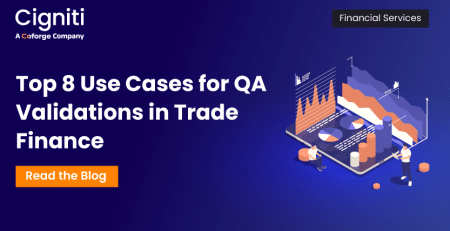Embracing T+1 Clearing and Settlement in the U.S. Financial Markets: A New Era for Financial Markets
The Acceleration of Trade Settlement Periods:
The efficiency and speed of trade settlements are critical to maintaining stability and trust in today’s fast-paced world of financial markets. The settlement periods for trade are becoming increasingly shorter due to continuous technological advancements. On May 28, 2024, this evolution took a significant leap forward when the settlement period for most U.S. securities traded through the Depository Trust Company (DTC) was reduced from two business days after the trade date (T+2) to the next business day (T+1). This new default period marks a pivotal moment in global financial markets’ history.
Understanding Trade Settlement Periods
Trade settlement is the process by which securities are delivered to the buyer and payment is delivered to the seller. The settlement period is between the trade date and the completion of this process. Historically, settlement periods have been extended to accommodate manual processes and ensure the accurate transfer of securities and funds. However, with the advent of digital technologies, there has been a significant push towards shortening these periods to enhance market efficiency and reduce risk.
The Journey from T+5 to T+2
The journey to T+1 has been incremental, reflecting the challenges and opportunities evolving technology presents. Decades ago, the standard settlement period was T+5, which required five business days to settle trades. As the financial markets grew and technology advanced, the period was shortened to T+3 and then to T+2 in September 2017. Each reduction has brought about improvements in efficiency, reduced counterparty risk, and better alignment with global markets.
Why Move to T+1?
Several compelling factors drive the transition to T+1 settlement:
- Risk Reduction: Shorter settlement cycles reduce the time frame during which counterparty risk exists. This means that the risk of one party defaulting on their obligations diminishes, thereby enhancing the overall stability of the financial system.
- Increased Liquidity: Investors can reinvest their capital sooner with quicker settlement periods. This increase in market liquidity can lead to more efficient capital allocation and potentially lower transaction costs.
- Operational Efficiency: Reducing the settlement period to T+1 requires firms to streamline operations, adopt more robust technologies, and improve process efficiency. This can lead to long-term cost savings and operational resilience.
- Global Alignment: Many global markets have adopted shorter settlement cycles. For instance, India and China operate on a T+1 or shorter cycle. By aligning with these standards, U.S. markets can enhance their competitiveness and attract more global investments.
Technological Enablers
Advancements in technology fundamentally enable the shift to T+1. Key innovations include:
- Blockchain and Distributed Ledger Technology (DLT): These technologies offer a transparent, secure, and efficient way to record transactions. By providing real-time settlement capabilities, they can drastically reduce settlement times.
- Automation and Straight-Through Processing (STP): Automation tools and STP systems eliminate the need for manual intervention in trade processing. This reduces errors, speeds up transactions, and ensures seamless communication between market participants.
- Advanced Data Analytics and Artificial Intelligence (AI): These technologies help accurately predict and manage settlement processes, identify potential issues before they arise, and ensure timely trade completion.
Challenges of Transitioning to T+1
While the benefits of moving to T+1 are substantial, the transition is not without challenges:
- System Upgrades and Integration: Market participants must upgrade their existing systems to handle the shorter settlement cycle. This involves significant investment in technology and integration of new processes.
- Regulatory Compliance: Ensuring compliance with new regulatory requirements associated with T+1 settlement can be complex. Firms must navigate many regulations and ensure their systems and processes meet these standards.
- Operational Risks: With less time to settle trades, the margin for error is reduced. Any operational issues can have a more immediate and significant impact on the market, necessitating robust risk management frameworks.
- Coordination Among Market Participants: Successful implementation of T+1 requires coordinated efforts across the entire financial ecosystem, including brokers, clearinghouses, and custodians. Ensuring all participants are on the same page and ready for the transition is crucial.
Industry Readiness and Steps Forward
The move to T+1 has been a collaborative effort involving regulatory bodies, industry groups, and market participants. The Securities and Exchange Commission (SEC) and the Depository Trust & Clearing Corporation (DTCC) have been at the forefront of this initiative, working closely with stakeholders to ensure a smooth transition.
Critical steps in the transition include:
- Stakeholder Engagement: Continuous dialogue with market participants to understand their concerns and provide guidance on the necessary preparations for T+1.
- Regulatory Approval: Securing approvals from regulatory bodies such as the SEC involves thoroughly reviewing the proposed changes and their potential impact on the market.
- Testing and Pilots: Conduct comprehensive testing and pilot programs to identify and address operational challenges. This phase is critical to ensure that systems and processes are robust enough to handle the accelerated settlement cycle.
- Phased Implementation: Rolling out the T+1 settlement system in phases to allow market participants to adapt their systems and processes gradually. This phased approach helps mitigate risks and ensures a smoother transition.
The Future of Trade Settlement
The adoption of the T+1 settlement is not the end of the journey. The relentless pace of technological innovation continues to push the boundaries of what is possible in financial markets. Future advancements could see even shorter settlement cycles, potentially moving towards real-time or T+0 settlements.
Conclusion
The shift to T+1 settlement marks a significant milestone in the evolution of the U.S. financial markets. Driven by advancements in technology and a commitment to reducing risk and improving efficiency, this transition promises to enhance the stability and competitiveness of the markets. While the journey to T+1 presents challenges, the collaborative efforts of regulatory bodies, industry groups, and market participants will ensure a successful transition. As we look to the future, the continuous pursuit of technological innovation will keep pushing the boundaries, paving the way for an even more efficient and resilient financial system.
Cigniti, an IT company specializing in digital transformation and technology solutions, assists clients in the US financial sector with transitioning to T+1 settlement. Leveraging advanced technologies like blockchain and automation, Cigniti ensures seamless integration and robust system upgrades, enabling clients to meet regulatory compliance, enhance operational efficiency, and mitigate risks effectively. Their expertise facilitates a smooth transition to shorter settlement cycles, supporting clients in achieving greater market competitiveness and efficiency.
Need help? Contact our Financial Services experts to learn more about embracing T+1 clearing and settlement in the US financial markets.






Leave a Reply